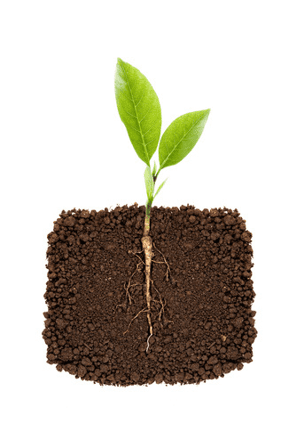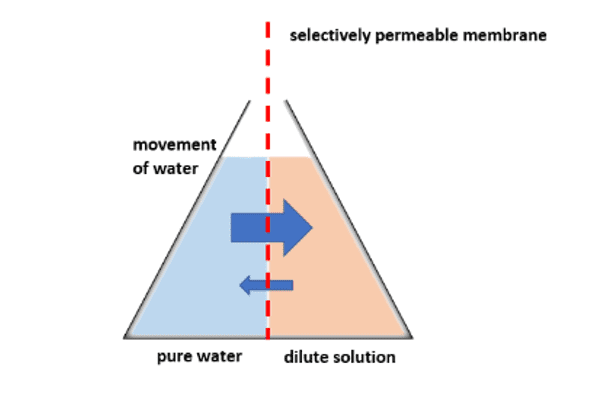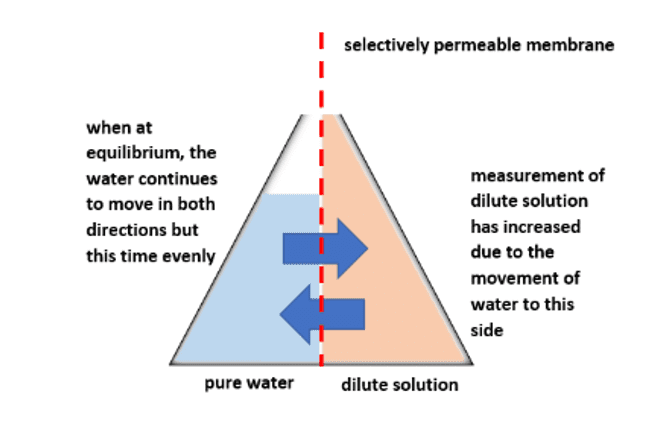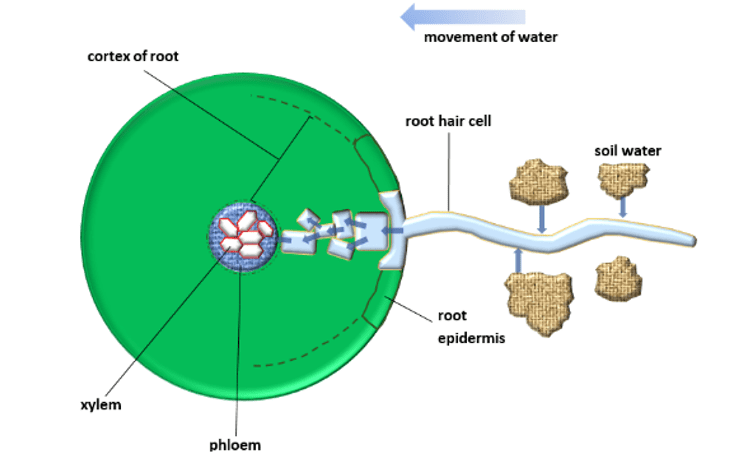In this post
Plants are able to absorb water and mineral ions from the soil through the process of osmosis. Just behind the growing tips of roots are thousands of tiny root hairs. These tiny root hairs increase the surface area of the root epidermis and are the main area of osmosis. Each root hair is a single, specialised cell. Located on the root epidermis, the long, thin outer projection of the hair cell is able to penetrate through soil particles to reach the soil water.

Osmosis
Osmosis is the process by which water molecules are able to pass through a selectively permeable membrane (also known as a semipermeable membrane or a partially permeable membrane). This process is very similar to diffusion in that water molecules move from an area of higher concentration to an area with a lower concentration of water. The following diagrams illustrate how the process of osmosis works:


Water will move from an area of high concentration to an area of low concentration. At first, water will pass through much quicker to the dilute solution until an equilibrium is reached. When an equilibrium is reached, water will continue to pass through the selectively permeable membrane evenly. However, larger molecules cannot pass through the membrane and so the dilute solution stays where it is; because of the added water, the measurement on the side of the dilute solution increases whilst it decreases on the side of the pure water.

There are a few points you must remember about the process of osmosis:
- That water molecules move in both directions through a membrane.
- Changing the pressure or the concentration of particles on one side of the selectively permeable membrane will change the movement of particles until equilibrium is achieved – once equilibrium is achieved, the water molecules will continue to pass through the membrane but this time evenly.
- The effect of water movement on the volume of the dilute solution and therefore the pressure of the different solutions.
Osmosis takes place in all cells. In plant cells, soil water is absorbed by the root hair cells through the process of osmosis:

The absorbed water is then transported from the roots to the rest of the plant via xylem vessels.
Water is used for a number of different purposes in a plant. These include:
- The transportation of dissolved materials around a plant
- A reactant used in photosynthesis
- Cooling the leaves through evaporation
- Supporting leaves and shoots by keeping cells of the plant rigid
Soil water has some solutes dissolved into it, for example mineral ions. However, the concentration of solutes is much lower than the concentration inside the root hair cell. Therefore, the amount of water is much higher in the soil than inside of the cell, allowing the water to enter the root hair cell through the process of osmosis.



